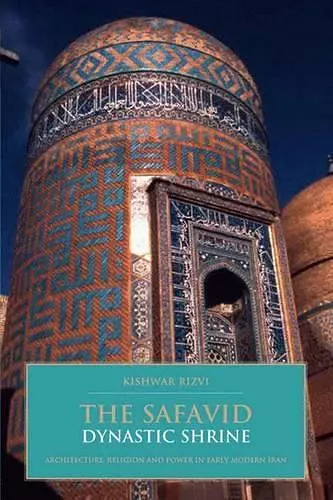The Safavid Dynastic Shrine
Architecture, Religion and Power in Early Modern Iran
Format:Hardback
Publisher:Bloomsbury Publishing PLC
Published:28th Feb '11
Currently unavailable, and unfortunately no date known when it will be back

The Safavid period represents an immensely rich chapter in the history of Iranian architecture. This work focuses on the shrine of Shaykh Safi, built in AD 1334, as an important template for an emergent Safavid taste.
The Safavid period represents an immensely rich chapter in the history of Iranian architecture. In this discussion of Safavid architecture in the context of its political, social and religious milieu, Kishwar Rizvi gives special consideration to the shrine of Shaykh Safi, built in AD 1334, as an important template for an emergent Safavid taste. Of both regal and religious significance, the shrine's direct relationship to imperial power is unique in Islamic architecture and provides valuable information about the methods of architectural benefaction prevalent in early modern Iran. Rizvi examines the ways in which the transition from a devotional aesthetic to an imperial one represented the young dynasty's imperial aspirations, and affected a wide range of public buildings from mosques to palaces during the early Safavid period and beyond.
'This engaging study promises to become the standard work on the Safavid dynastic shrine at Ardabil, one of the most important shrines of the Islamic world. In its interweaving of architectural and dynastic history, The Safavid Dynastic Shrine moves well beyond its immediate subject, shedding new light on the role of regional shrines in the articulation and consolidation of Safavid authority and ideology more generally.' - Finbarr Barry Flood, William R. Kenan Jr. Professor of Humanities, Institute of Fine Arts and Department of Art History, New York University; 'Kishwar Rizvi's book on the shrine of Shaykh Safi al-Din at Ardabil is a thorough appraisal not only of the architecture of Safavid Iran but of the intricate relationship between religion, mysticism and royalty in the sixteenth and seventeenth centuries. Analyzing the rituals performed at the Ardabil Shrine, Dr. Rizvi has linked her discussion of its architectural forms with descriptions of the buildings' function and their users. Because this book examines the shrine from a multitude of angles, it should appeal to readers interested in Safavid history, politics, religion, archaeology, art and architecture. Among the leaders of a new generation of Islamic art historians, Kishwar Rizvi has notably advanced the study of Safavid Iran with this volume.' - Sheila Canby, Patti Cadby Birch Curator in Charge, Department of Islamic Art, The Metropolitan Museum of Art
ISBN: 9781848853546
Dimensions: unknown
Weight: 617g
288 pages